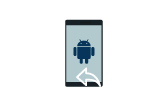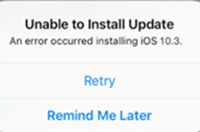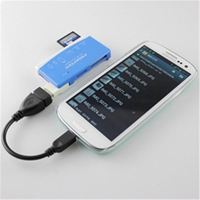Android Data Recovery
Testing a new mobile app is confusing at the best of times, but with so many different kinds of testing, does anybody know the best way to test an app?
Integration Testing
Integration testing verifies that all aspects of the app work well together. Where unit testing validates each module (or unit), integration testing focuses on the communication paths between all modules, for smoother operating on the system as a whole.
There are different types of integration testing, including top-down, Big Bang, and sandwich testing. Each of these types of testing is a different method for testing the quality, durability, and effectiveness of the app. This strategy of testing enables app developers, as well as testers, to get the most from the app and allows for cross-application communication, which can improve user experience.
Integration testing services, such as QAwerk, offer these methods to customers, to get the best experience from the app, and the best product for customers. Integration testing is essential for apps to communicate with each other in a way that allows several mobile apps to be used together and perform smoothly.
Cross-Platform Testing Strategy
This strategy is essential for guaranteeing that software on the app will be of high quality and will look aesthetically pleasing to the users. Through this strategy, one can test the app for suitability for the end-user in terms of functionality, aesthetics, and compatibility.
For this strategy to be effective, data needs to be collected before testing regarding the intended audience, business objectives, needs of the user, and requirements of the project itself. Once the data has been received, a testing plan can be put into action. This includes deciding whether to proceed with manual testing or automated testing.
Functionality Testing Strategy
Owing to the words used, it tests the app’s functionality. Functionality testing observes how well the app performs in different situations, how it functions with the information it contains, and how it works on various platforms, i.e., Android or Apple services.
Functionality can also be affected by updates to software or added content. This is why functionality testing is often used with regression testing. Regression testing is the process of testing the entire flow of an app, from the very beginning to the very end, after new code has been added to improve, or include functionality. This is to guarantee that any additions will not affect the performance of the app. This type of testing is routine throughout the life of the app.
Automated Testing Strategy
Automated testing is cheaper and more easily maintained than manual testing. However, computers to test mobile apps would need to be finely programmed to pick up on even the smallest of defects within a mobile app during the testing process. For this purpose, specific test cases are created and programmed into a testing computer to catch minor, as well as major issues within an app.
Manual testing can provide better results in terms of user feedback relating to aesthetics and responsiveness, but automated testing is the preferred method. With this testing strategy, the process of testing the app becomes more accessible, more cost-effective, and less time-consuming. Without the element of human error, tests can also be more accurate and allow developers to better deal with the issues that arise.
The automated testing strategy enables testers to test cases automatically through all the stages of the app’s testing. This can cut down on time it can take for the app to go through the process and could make it available sooner.
External Factors Testing Strategy
This type of testing is significant when looking at user needs. External factors testing is part of the process of deciding how users will interact with an app when they have connectivity issues. This enables app developers to determine the experience their users will have when connectivity is limited.
This strategy can help to limit customer frustration by showing if an app that loses connectivity will miss the information or content that the customer was using at the time. In areas of poor connectivity, using apps can be difficult, especially if the app freezes or crashes, and information is lost. External factors testing allows developers to define the terms of their user experience.
While each testing strategy is different, they all focus on making an app as pleasant as possible for users and ensuring quality functionality.






















